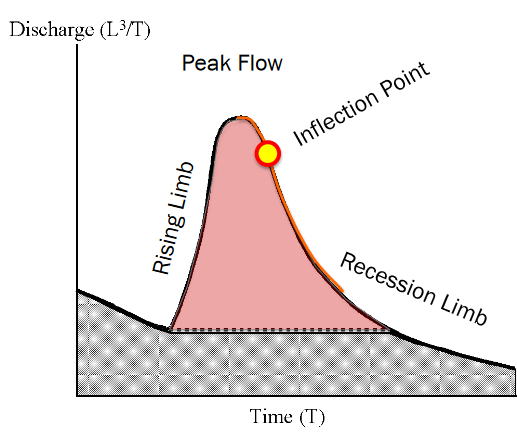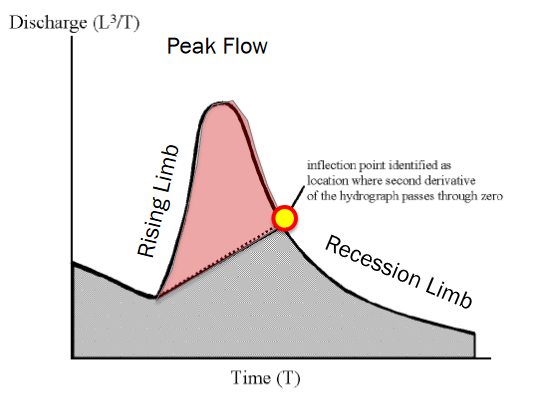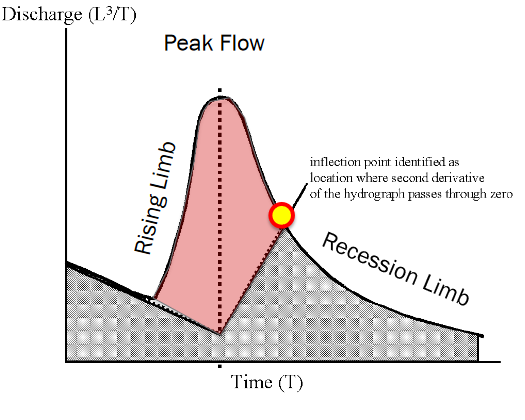8.1 Baseflow Separation¶
Baseflow separation is a first step in analysis – several methods
Constant discharge method¶

When rising limb starts – declare that value to constant rate during the event, rejoin as recession limb.
All flow above the value is declared storm flow
Constant slope method¶

When rising limb starts – draw a segment from that value to the inflection point on the recession limb
All flow above the value is declared storm flow
Hard to implement for multiple peak hydrographs (real hydrographs may exhibit many peaks)
Concave method¶

When rising limb starts – draw a segment from that value following the recession curve to a point beneath the peak flow.
Then draw a segment from the point above to the inflection point
All flow above the segments are declared storm flow
Hard to implement for multiple peak hydrographs (real hydrographs exhibit many peaks)
There are a few more ways to accomplish baseflow separation
The master-depletion curve method is outlined in the readings
For many practical cases with multiple peaked hydrographs the constant discharge method is probably the most straightforward to apply (or use continuous simulation techniques – outside scope this course)
Summary concepts¶
Base-flow separation isolates the total discharge from the storm-induced discharge
Spreadsheets¶
Listed below are spreadsheets that implement simple UH examples. They are Excel (circa 2009) spreadsheets, that work in current Excel, LibreOffice, and Numbers environments
